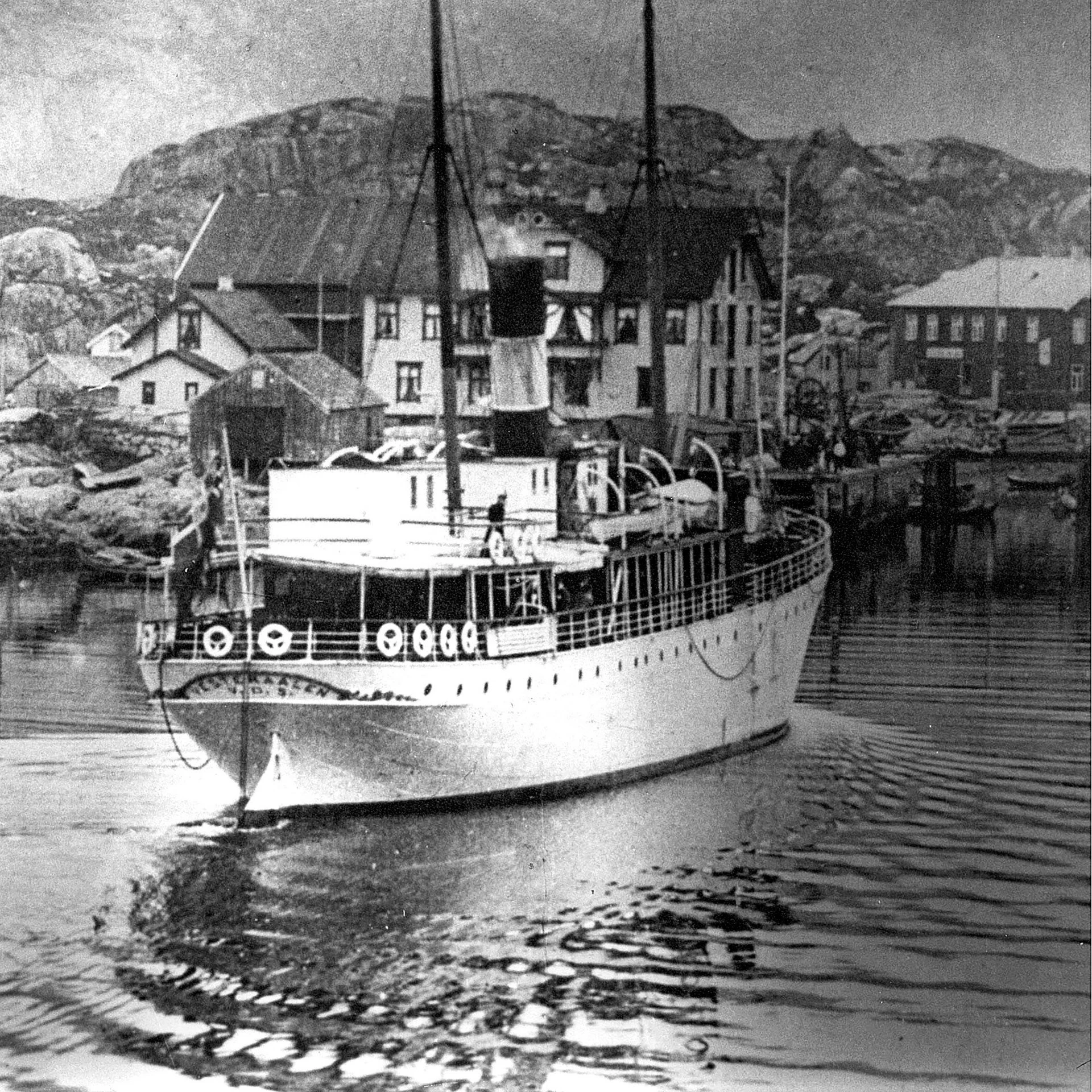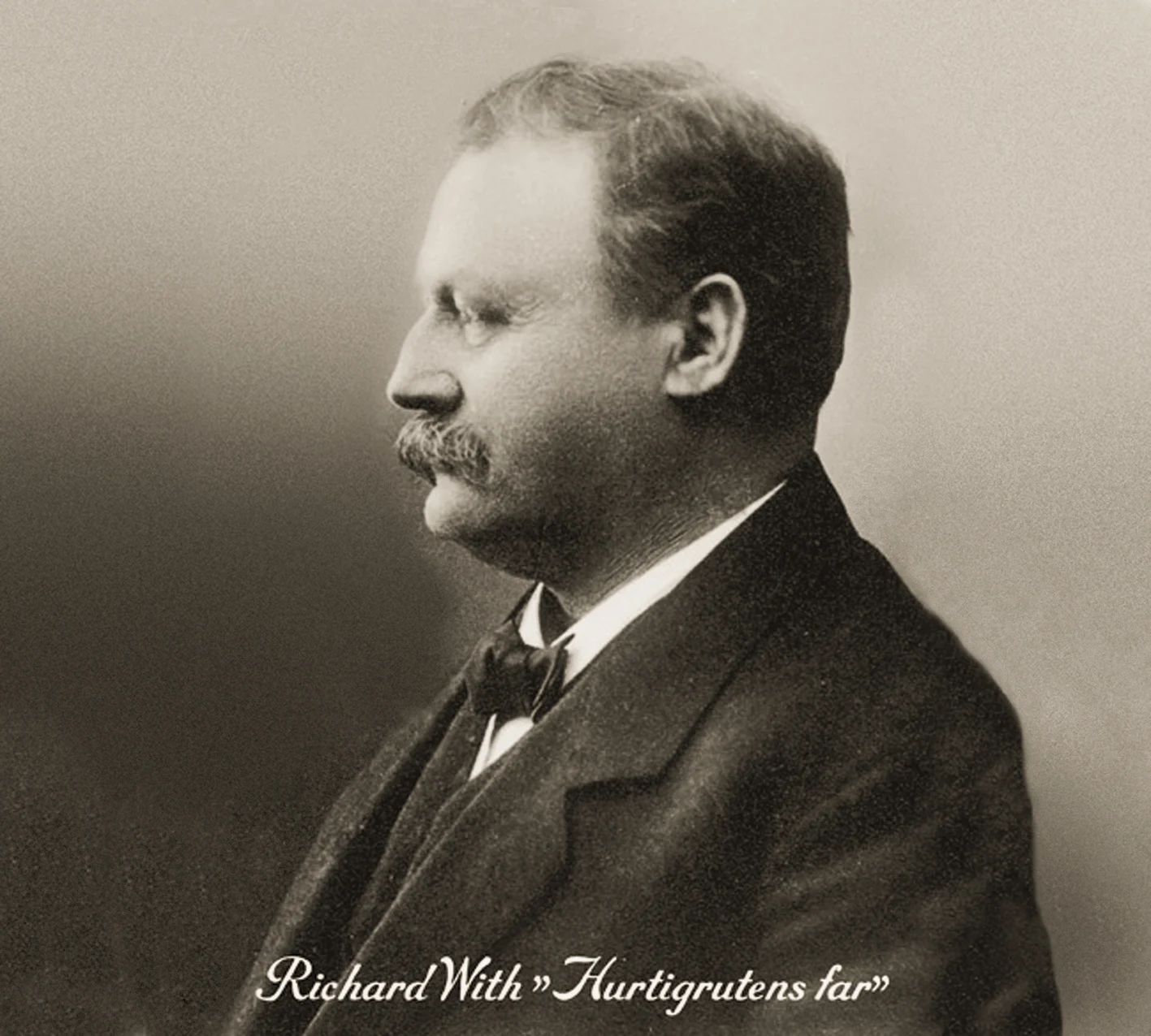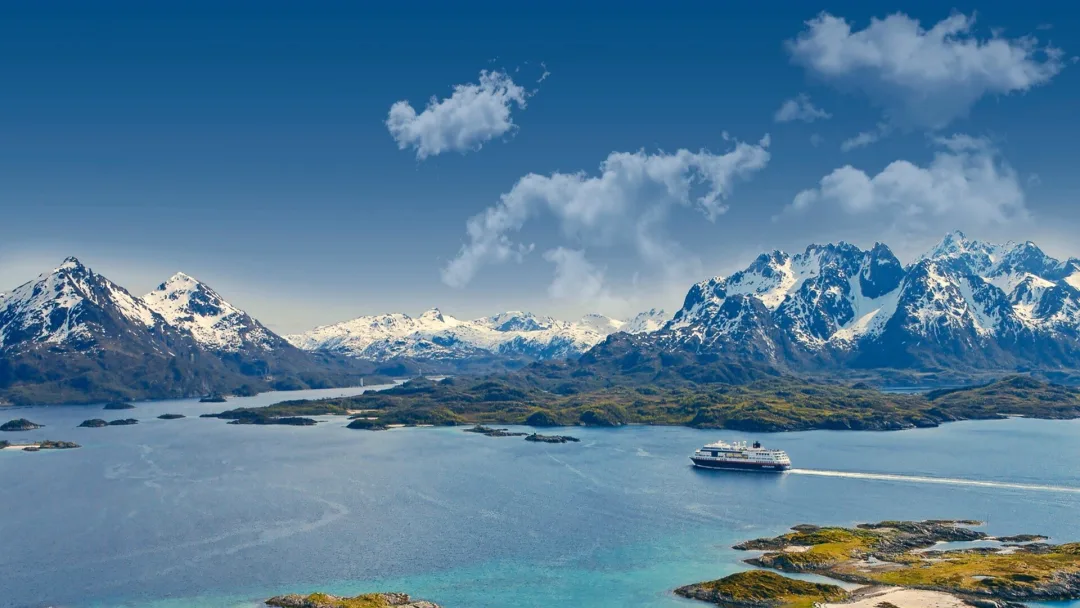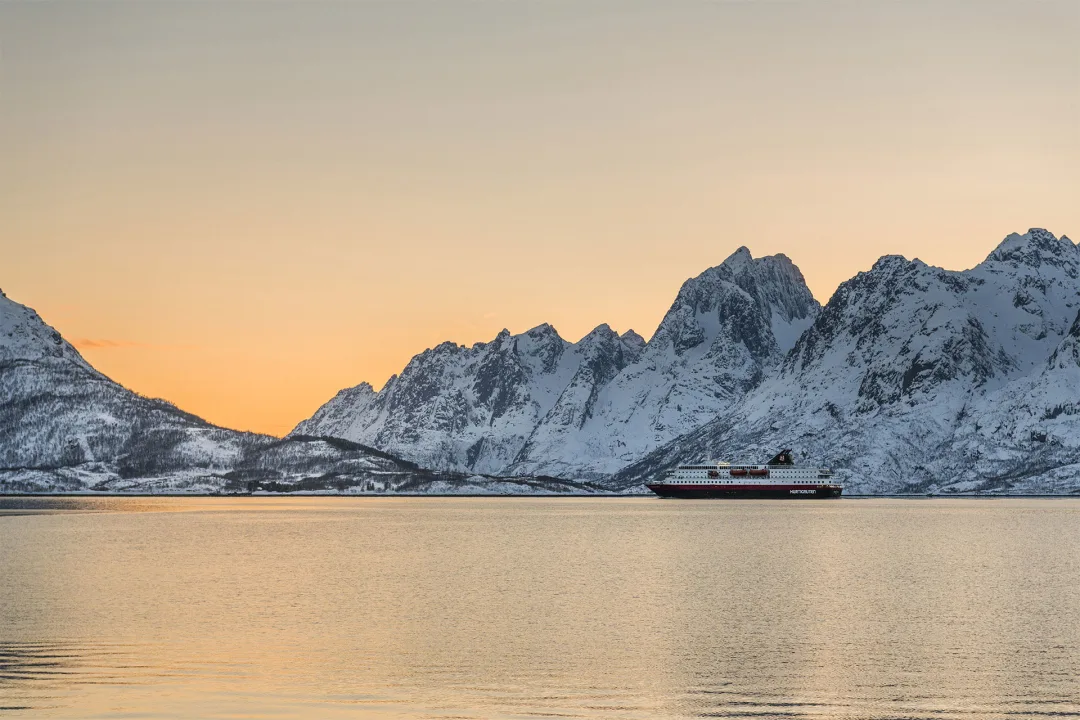
The origin of the original: the beginnings of Hurtigruten
When shipping pioneer Richard With founded The Original Coastal Express back in 1893, little did he know that it would forever change the future of the Norwegian coast.
Our story starts in the late 19th century. Infrequent steamers and unreliable single-sailed jekts filled the waters of the Norwegian coast. Nothing permanent existed to connect the country’s cities, towns, and villages. Just sending a letter from Trondheim to Hammerfest took about three weeks, and as many as five months during winter.
Cargo was a problem too. The rich fishing grounds of herring, halibut, and cod in northern Norway were cut off from southern Norway where they could be exported to meet ever-increasing demand in Europe.
Standing in between was an arduous 1,250-nautical-mile-long route from Bergen to Kirkenes lined with perilous reefs, small islands, and narrow inlets. There were only 28 lighthouses north of Trondheim and just two nautical maps, making sailing day and night a risky venture.
Challenge accepted
The Norwegian government wanted to find a remedy for the situation. In 1891, they invited shipping companies to submit tenders to operate a state-sanctioned route between Trondheim and Tromsø or Hammerfest, sailing through the night. No one replied.
The government tried again the following year, but the two main shipping companies of the day were completely disinterested. But where these others shied away, one man took on the challenge: Captain Richard With.
The father of The Coastal Express
Captain Richard Bernhard With was born in Tromsø in 1846 with sailing in his blood. The son of a shipmaster who helped the city of Tromsø acquire its first merchant ship, young Richard would follow in his father’s footsteps, but on a much grander scale.
Richard With spent his early days working as a navigation officer and then a Captain on merchant ships. He later settled, married, and opened a trade store in Risøyhamn to take advantage of the boom in herring fishing. It was during this period that he quickly recognized the growing need for better sea transportation in the region.
In the autumn of 1880, With embarked on a new venture to raise share capital for a steamship company. By November 1881, initial operations began with Captain With as shipmaster. Within three years, he was able to acquire two more ships, opening up trade routes between Bergen and Lofoten.

Charting the way through
With set about mapping the Norwegian coastline together with Anders Holte, an experienced local sailor. That partnership led to the coast's first major navigation method, based on accurately recording observations of the sea and coast.
A canny businessman, With hired skilled captains who could use the system Holte had developed to navigate the coastal waters in the dark of night, shaving valuable time off each journey while his competitors slept.
By the time the government tender came around in 1892, Captain Richard With was ready to defy sceptics and achieve the long-awaited vision of the “hurtig ruten”, ‘the fast route’.

An icon is born
On 2nd July 1893, steamship DS Vesteraalen embarked on the maiden “Hurtigruten” voyage. From Trondheim, it called at nine ports and arrived in Hammerfest three days later, 45-minutes ahead of schedule.
It was a momentous occasion for families all along the coast who waved flags to welcome the ship. The achievement heralded a radical transformation in communication where letters now only took days rather than weeks, and where people, no longer isolated, were able to freely move about the coastline.
A fast, reliable service
The fast, reliable service supported fishing communities, enabling local businesses to boom as their catch was sent south and exported worldwide. This revolution financed the development of other industries, creating prosperity throughout Norway.
It didn’t take long for the swift yet safe weekly service to increase in frequency, climbing steadily to daily departures by 1936. The route was also extended to Bergen in the south and all the way up to Kirkenes on the Russian border. With each milestone, new ships were added to the fleet, and the rest, as they say, is history.

A legacy continues
Captain Richard With retired as a shipmaster and became CEO of the company where he remained until 1904. He was later elected to parliament and knighted First Class of the Royal Norwegian Order of St Olav, “a reward for distinguished services rendered to Norway and mankind”.
We’re proud to continue our founder’s pioneering spirit. His legacy lives on with us today, as strong and as committed as ever.
Choose how you want to discover our home, the Norwegian coast
- Multiple offers

Roundtrip Voyage from Bergen | Explore Norway’s Coastline
Route
Bergen - Kirkenes - Bergen (Roundtrip)
Departure Dates
Regular departures - 12 days
Price from $3,434
$2,404
Ships
Multiple
- Multiple offers

11-Day Norwegian Voyage | Bergen - Kirkenes - Trondheim
Route
Bergen - Kirkenes - Trondheim (Roundtrip)
Departure Dates
Regular departures - 11 days
Price from
$3,434
Ships
Multiple
- Multiple offers

7-Day Norwegian Voyage: Northbound | Bergen to Kirkenes
Route
Bergen - Kirkenes (Northbound)
Departure Dates
Regular departures - 7 days
Price from $2,336
$1,635
Ships
Multiple